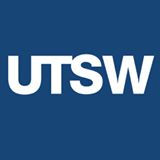This study aims to harness bioinformatics to identify prognostic immune-related genes in clear cell renal cell carcinoma (ccRCC), focusing particularly on LILRB3. It evaluates LILRB3's expression in ccRCC, its association with patient prognosis, and its potential as a biomarker for predicting survival, thereby providing a preliminary basis for the diagnosis of ccRCC. Utilizing The Cancer Genome Atlas (TCGA) datasets and an immune gene set, we sought immune-related genes with elevated expression in ccRCC. Seventy-two normal tissue samples and 531 ccRCC samples were analyzed, and differential genes were identified with a screening criterion of fold change (FC) > 2 and P value < 0.01. Survival analysis and receiver operating characteristic (ROC) curve analysis were employed to discover genes of prognostic and diagnostic relevance to ccRCC. Pearson correlation analysis with a cutoff of |r|≥ 0.5, facilitated by cBioPortal, assessed genes co-expressed with LILRB3. The DAVID online tool conducted functional and pathway enrichment analyses for LILRB3-coexpressed genes. The TIMER and TCIA databases were utilized to explore LILRB3's influence on immune infiltration in the tumor microenvironment and its relation to key immunological checkpoints. Screening the TCGA database revealed 3719 up-regulated differential genes in ccRCC, with 355 overlapping immune-related genes. Survival analysis of these 355 genes revealed 100 with significant survival impact. ROC curve analysis pinpointed the top 10 genes, including LILRB3, with the highest diagnostic efficiency. LILRB3 emerged as an independent risk factor from the Cox risk regression model. GO and KEGG analyses linked LILRB3 to various biological processes, including chemokine signaling pathways, immunological response, antigen processing and presentation, inflammatory response, T cell co-stimulation, and signal transduction. LILRB3 significantly affected ccRCC immune infiltration and correlated positively with several immunological checkpoints, such as PD-1, LAG3, IDO1, PD-L1, CTLA4, TIM3, TIGIT, and VISTA. LILRB3 shows higher expression levels in ccRCC than in normal tissues and correlates with poor patient prognosis. Its impactful role in the immune infiltration of the RCC microenvironment suggests that LILRB3 could serve as a novel target for ccRCC treatment and prognosis, underlining its diagnostic and prognostic significance.


